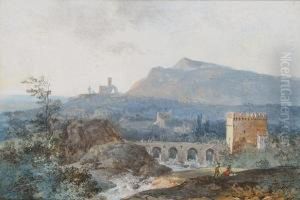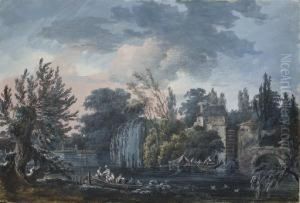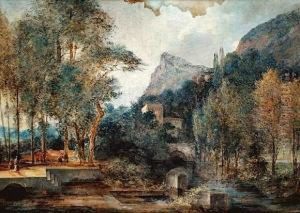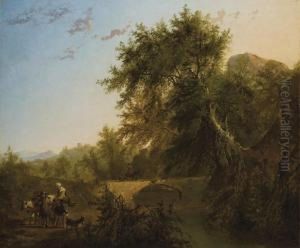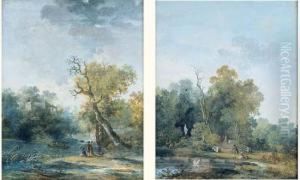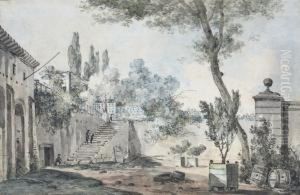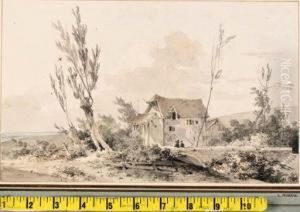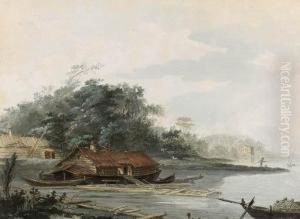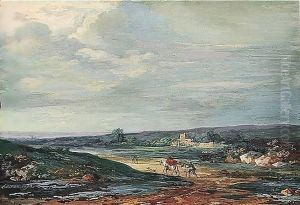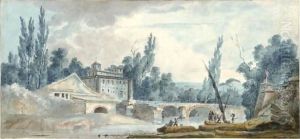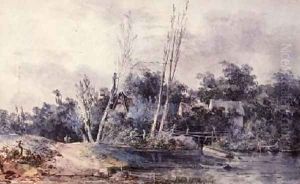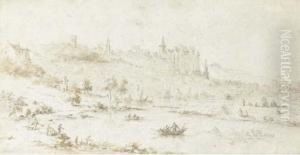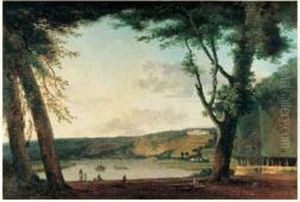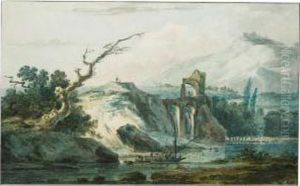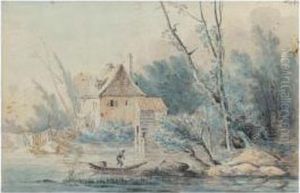Louis-Gabriel Moreau the Elder Paintings
Louis-Gabriel Moreau, also known as Moreau l'aîné (the Elder) to distinguish him from other artists of the same family name, was a French painter and draftsman born on March 20, 1740, in Paris. He is best known for his landscapes and picturesque scenes, often infused with a delicate, rococo sensibility that was characteristic of the period before the French Revolution.
Moreau was a pupil of the landscape painter Jean-Charles Frontier and also studied with the renowned Italian architectural painter Giovanni Niccolò Servandoni. His early works were influenced by these masters, shaping his eye for architectural elements and romantic landscapes. He was particularly adept at capturing the play of light and the lush details of nature, which made his work popular among art collectors and the French nobility.
In the 1760s and 1770s, Moreau's career flourished. He became a member of the Académie Royale de Peinture et de Sculpture in 1768, which was a significant recognition of his talent and contribution to the art world. He exhibited at the Paris Salon, the official art exhibition of the Académie des Beaux-Arts in Paris, and his works were well received, further cementing his reputation as a leading landscape artist.
Despite the turmoils of the French Revolution, Moreau continued to work and receive commissions. His style, however, gradually became less fashionable in the wake of the neoclassical movement, which favored a more austere and grandiose approach to art. Nonetheless, Moreau maintained a loyal clientele and continued to produce delicate landscapes and vedute, a term for detailed, often large-scale paintings of city scenes or vistas.
Louis-Gabriel Moreau the Elder's legacy is that of a quintessential 18th-century French landscape artist. His works are characterized by their lightness, grace, and a certain poetic charm. They capture the essence of the pre-revolutionary French aristocracy's taste and the era's cultural climate. His influence can be seen in the works of subsequent generations of landscape artists who sought to evoke a sense of harmony and beauty in their portrayal of the natural world.
Moreau passed away on January 21, 1806, in Paris. His art continues to be appreciated for its historical value as well as its aesthetic qualities, providing a window into the past's landscape painting traditions.
